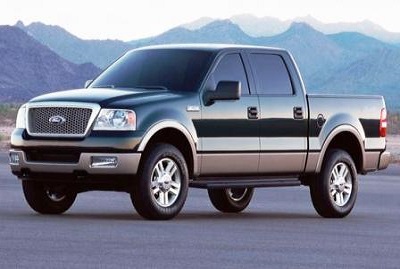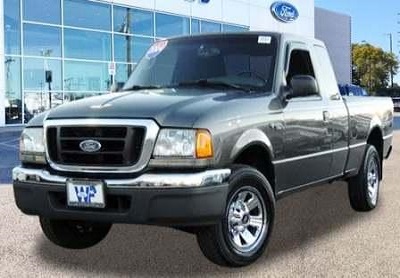
Even the most reliable automobile will require repair at some point. This is why you have to learn how to evaluate auto repair estimates correctly. The retail repair center uses an industry standard formula to come up with the magic number. Understanding how the shop reaches this dollar total becomes important for those seeking to pay a fair price for the required services.
In this article will cover the many different charges you’ll find on most auto repair estimates. Keep in mind, if you have a repair that requires diagnosis, that this is often looked at as a separate charge. Many shops will waive the diagnostic fees if the customer agrees to the repairs as outlined in the estimate. With that said, there are some instances where extended diagnosis becomes necessary to uncover the root cause of the issue. In these situations diagnostic charges may hold a separate line item on the estimate.
Standard Auto Repair Estimates

The standard auto repair estimate includes separate estimates for parts and labor. However, you’ll also find a separate line item for shop charges and possibly for diagnosis as mentioned above. In this section we’ll talk briefly about how these work together to arrive at the final figure presented to the consumer. Throughout the rest of the article we’ll provide more details about each one of these sections. Specifically, pointing out standard practices and where you’ll find common errors.
First let’s talk about the labor section of the estimate. As you would expect, the labor involves the mechanic working on the car. Read this article about how auto mechanics get paid if you want to learn more about flat rate. However, what you need to know is the mechanic gets paid by the job and not solely by the hour. In other words, if you need an alternator for your 2004 Ford F150 pickup truck the shop looks up a standard labor time to perform this procedure. The mechanic receives compensation at this set amount.
The next thing to tackle is the parts estimate. This section of the auto repair estimate represents the trickiest part to understand. The auto repair shop makes money on the parts it installs. This business has a right to make money just like any other. With that said, you have to verify that they aren’t taking advantage of you at the same time. The industry uses a standard of cost plus 30 percent on automotive parts. You can keep the shop honest by calling around to find out how much the replacement parts would cost you if purchased in a retail environment. Adding 30 percent to this number is where you want to find yourself when evaluating auto repair estimates.
Estimate for Miscellaneous Shop Charges

First let’s talk about what a miscellaneous shop charge includes. Things like waste disposal fees, chemicals used during the auto repair and even shop rags or razor blades are often included in a shop charge. Back in the old days the auto repair shop included these miscellaneous items in the repair as part of doing business. However, these expenses rise exponentially over the last 20 years. Therefore, auto repair shops can no longer absorb these larger expenses.
With stricter regulations in the industry, retail automotive businesses are required to collect, store and dispose of things like waste oil and used oil filters. These expenses continue to climb. The auto repair shop agrees to properly clean and maintain their rags and chemical spills. Finally, we use expensive chemicals in many auto repair services like throttle body services or fuel injection cleanings.
The important thing to understand about this section of an auto repair estimate is how the charges relate to your specific situation or repair. In the example used above, on the alternator replacement, miscellaneous shop charges should be minimal. This is because they didn’t use any chemicals or store any waste. And the shop returns the alternator to the parts store for rebuilding where it’s then resold. If the shop doesn’t return the alternator they pay a core fee. We’ll dig a little more into this subject below.
Problems with Car Repair Estimates

Often the first reaction when someone reviews an estimate for car repair becomes one of shock and awe. It’s important to clear your mind and evaluate each section. Here we’ll talk about common mistakes made in each individual area. To begin will start off with the labor estimate. This represents a common area where charges become miscalculated. Remember that the repair center bases the labor charge on how long it will take the mechanic to complete the repairs.
Different automobiles will have vastly different labor times to perform the same operation. As an example, replacing the alternator on a Ford Ranger pickup is easier than performing the same operation on a V6 powered Cadillac CTS. Therefore verifying the shop used the correct year, make and model to obtain the details about how long it should take become important. Follow up with the shop and asked them which labor guide they used. Furthermore, ask to see this labor guide and review the charges.
In addition, labor guides allow additional time to remove optional accessories. As an example, you might get an additional half hour to remove a belly pan on a sport utility vehicle. If your vehicle isn’t equipped with this off-road accessory, you shouldn’t see a charge for additional labor hours. Another area to closely evaluate is the parts section of the auto repair estimate. Using the example of the alternator replacement parts, the shop could source new or rebuilt components. Verify which type the auto repair center plans to use and then take one additional step in verifying the cost.
Problems with the Miscellaneous Shop Charge
We’ve written an article on our sister site that received a lot of feedback. Take a look at this article if you would like to join the conversation about miscellaneous shop charges. This is a tough subject to discuss because we all want to take care of the environment. A retail automotive center is a business struggling in a decreasing profit margin environment. Therefore, they deserve compensation for expenses due to increasing environmental regulations.
With that said, shops and automotive dealership service departments that include automatic percentages as an additional shop charge isn’t fair in my opinion. Find out how the service operation reaches its shop charge. If they tell you that it’s 2 percent of the total repair, you need to negotiate this on how it relates to the particular service you received.

